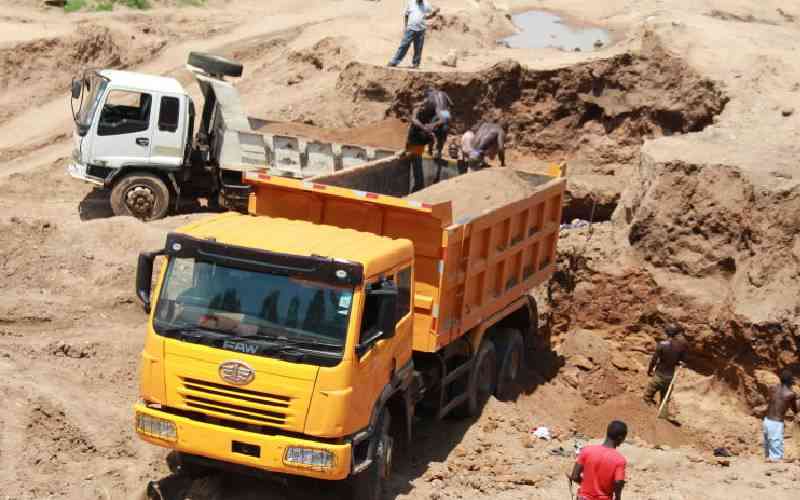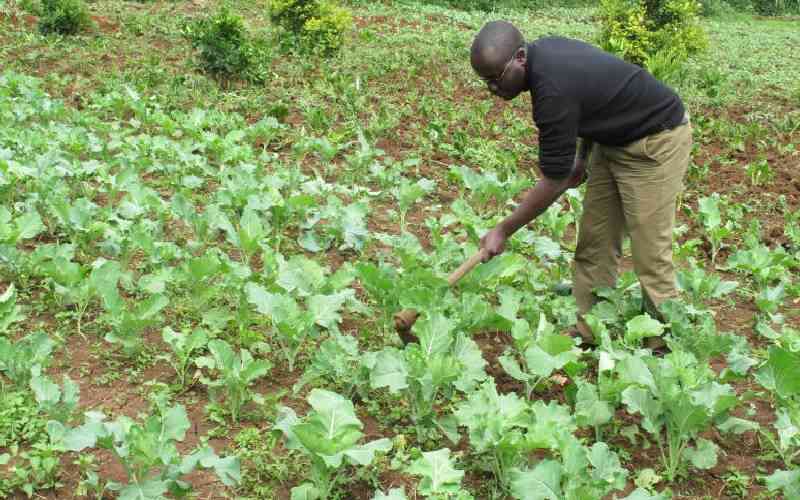Sigiri Bridge in Busia that was commissioned in August 2018 meant many things to different people.
For politicians, it was a flagship project but for those crossing River Nzoia, it is the epitome of safety. And to Budalang’i residents, it was the greatest rural infrastructure of their time and an enduring landmark.
As for the helmsmen, whose task involved moving people and goods across the 100-metre wide Nzoia River before the Sh1.2 billion bridge was commissioned, it was the death of a career that they inherited from their grandfathers.
“Our grandfathers earned their living by ferrying people using canoes between Bunyala North and Bunyala West and we inherited this from them. The bridge’s construction marked the end of the business,” says Francis Namude, who had been a helmsman for 10 years.
The helmsman had to think of alternative income generating projects lest they became beggars or turned to crime.
China Overseers Engineering Company began the construction of the bridge in 2015 and that is when residents discovered sand, turning it into a lucrative business.
“They (Chinese) demanded a lot of sand for the construction and we supplied them on a part-time basis. The venture turned out to be more lucrative than our mainstream job,” says Michael Juma, a former helmsman.
And on June 26, 2017, the bridge collapsed due to poor workmanship and they started the reconstruction in October of the same year.
The sand harvesters say the collapse meant fate had endorsed their new job, and just like that, they landed in the sand extraction industry.
SandStories.org, a leading global organisation that creates awareness of the urgent need to manage consumption of sand, estimates the industry is worth $70 billion (Sh7.5 trillion) worlwide, roughly equivalent to Kenya’s GDP.
The United Nations (UN) approximates that 50 billion tonnes of sand and gravel are used around the world every year in the construction industry.
“While most of us are not aware of it, sand is – after air and water – the third most used resource on the planet. Every house, dam, road, wine glass and cellphone contains it,” notes a publication by the UN environmental programme (The search for sustainable sand extraction is beginning) dated January 2019.
Demand for sand is expected to rise considerably as the global urban growth is projected to hit 66 per cent by 2050.
Namude says he would never go back to his former job. “This is gold. You are assured of going home with between Sh1,000 and Sh2,000 every day and things are getting better by the day,” he said, adding that he used to take home Sh1,000 at most as a helmsman.
But as good as the business sounds, the reality is that the world is extracting sand at alarming levels. SandStories.org warns that “indiscriminate extraction of sand has severe environmental, social, economic and geopolitical impacts.”
Stay informed. Subscribe to our newsletter
The impacts include coastal erosion, reduced resilience to extreme events, impaired water and food security, destruction of longtime livelihoods like fishing and loss of biodiversity.
As demand for sand is set to grow, experts advise that the world comes up with alternative construction materials to avoid a looming crisis.
[email protected]
 The Standard Group Plc is a
multi-media organization with investments in media platforms spanning newspaper
print operations, television, radio broadcasting, digital and online services. The
Standard Group is recognized as a leading multi-media house in Kenya with a key
influence in matters of national and international interest.
The Standard Group Plc is a
multi-media organization with investments in media platforms spanning newspaper
print operations, television, radio broadcasting, digital and online services. The
Standard Group is recognized as a leading multi-media house in Kenya with a key
influence in matters of national and international interest.
 The Standard Group Plc is a
multi-media organization with investments in media platforms spanning newspaper
print operations, television, radio broadcasting, digital and online services. The
Standard Group is recognized as a leading multi-media house in Kenya with a key
influence in matters of national and international interest.
The Standard Group Plc is a
multi-media organization with investments in media platforms spanning newspaper
print operations, television, radio broadcasting, digital and online services. The
Standard Group is recognized as a leading multi-media house in Kenya with a key
influence in matters of national and international interest.







